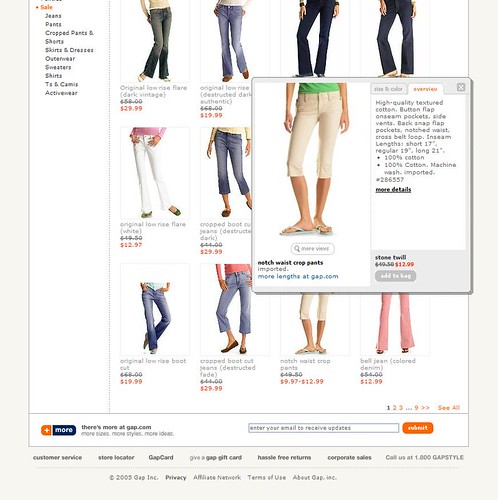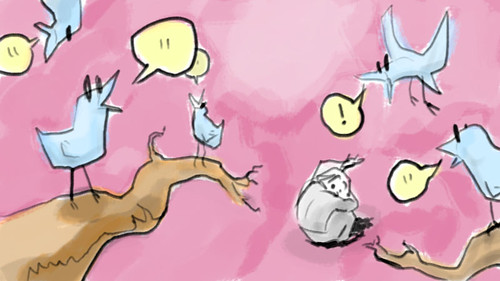Monday, March 21, 2011
You ARE Optimizing Your Product Descriptions, Right?
Given the recent Google Panda algorithm change, it’s now more important than ever for businesses to take steps to insure that their content is fresh and original and not just copied verbatim from other sources. Retailers may have unconsciously been publishing unoriginal content by failing to optimize their product descriptions. Instead of taking the time to write their own unique product descriptions, a lot of retailers either copy from their competitors or use the exact same verbiage from the suppliers. While it may be tempting to do that, it can penalize your site for scraping content, so it really is worth the time to go through and start replacing any copied product descriptions you may have with fresh, original copy. Even though it may seem difficult to come up with new and interesting way to describe the products you offer, there are ways to accomplish this rather easily.
Learn All You Can About the Product
This may seem like a no-brainer, but a lot of retailers really don’t take the time to know the ins and outs of the products they’re selling. They will just copy down whatever description supplied by the manufacturer and call it a day. Instead of doing this, take the time to dissect the verbiage that came with it and rewrite it in a way that will be easily understood by your customers. Oftentimes, manufactures use jargon that is vague or unclear to the average person. If you run across copy like this, put yourself in the mind of whom you are marketing to and use terminology that’s easy to understand. You should also take this opportunity to address common questions customers may have had in the past about a particular product and to build the answer into the description.
Establish a Voice and Personality
Most product descriptions are dry and boring, yet they don’t need to be. This is your chance to establish a definite voice and personality for your brand. Weave in a little story about how the customer could use a particular product and describe how it could make them feel. Tapping into someone’s emotional state and mind and showing that by buying your product they can fulfill a certain need or provide a sense of security can be some very powerful stuff. Before writing descriptions, it might be very helpful to first write down information about your typical customers and how they might sound. By taking the time to do this step, you will find it easier to write creative content that will not only inform your customers, but will draw them in emotionally.
Implement SEO into Your Descriptions
Another benefit to rewriting your product descriptions is that it gives you the chance to optimize your content for the search engines in addition to your customers. Make sure you’re using keywords in your product titles and descriptions, but don’t overdo it. As a rule of thumb, use the keyword, or product name, once every 100 words. For each product description, you will want to link the most important keyword to the home page, preferably the first link within the description. Try and make your copy at least 250 words for maximum SEO benefit. It has been documented that search engines value variety, so, if appropriate, consider using a video to demonstrate how to use your product or highlight certain features. This is your chance to get creative so that you can showcase your products in the best light possible in a way that’s unique, exciting and attention getting.
Although the prospect of rewriting thousands of product descriptions is certainly daunting, you need to tackle the project one step at a time. First, identify your most popular, best-selling, highest-margin items and start with them. Then, after taking care of your most important accounts, tackle five products a day and, before you know it, you will have it done in no time and will be increasing your sales AND your search rankings!
Thursday, March 3, 2011
Do You Have Bad Twitter Habits?
There’s no question that engaging in social media is an essential part of any company’s marketing strategy. Twitter is an extremely popular platform for connecting with your audience and establishing brand awareness. But, if you don’t follow the Twitter “netiquette”, you will be doing the opposite of what you’re trying to accomplish and will drive people away. Keep reading to make sure you aren’t unconsciously alienating your followers.
Don’t Automate
While some people use the auto-post option to streamline their efforts, this really isn’t a good idea. The whole purpose of engaging in social media is to forge meaningful connections with your customers and bombarding them with auto-generated content is the antithesis of that. Instead, take the time to find material yourself that you feel will be of interest to your followers. Similarly, do not send mass, automated direct messages. When you automate everything, you are basically telling your followers that they are all just faceless, nameless prospects that you really don’t care about.
Be Discerning
Don’t tweet about every single article you have ever written. You will not gain the attention and recognition you seek by force-feeding your content to your audience. Instead, take some time to look through your library and pick only the cream of the crop to Tweet about. Avoid tweeting old content; the very nature of Twitter necessitates content that is extremely current and up-to-date. No one wants to hear yesterday’s news, keep your tweets fresh. Also, do not Tweet too much. If you flood someone’s Twitter feed with dozens of messages, they will unfollow you very quickly. Choose quality over quantity to ensure that your followers will be hanging on your every word.
Mind Your Formatting
Tweets consist of up to 140 characters—that’s it. So, when you tweet, be mindful of this limit and word it so it falls within these parameters. You definitely do not want to break up your messages within multiple tweets; it will be too confusing and difficult to follow. If you are going to use Twitter effectively, you must operate within its framework and learn how to write so you can leverage its microblogging format to your advantage. You also want to avoid using too many abbreviations or text chat lingo. Yes, your text real estate is limited on Twitter, but you don’t want to alienate and confuse the majority of your audience by crafting tweets that are unreadable.
Yes, getting the hang of Twitter can be a bit challenging, but with a little bit of time and effort, you will get the hang of it. Before tweeting, make sure what you’re posting is relevant, is of high quality and is something that you feel casts your business in the best light.
Subscribe to:
Posts (Atom)

